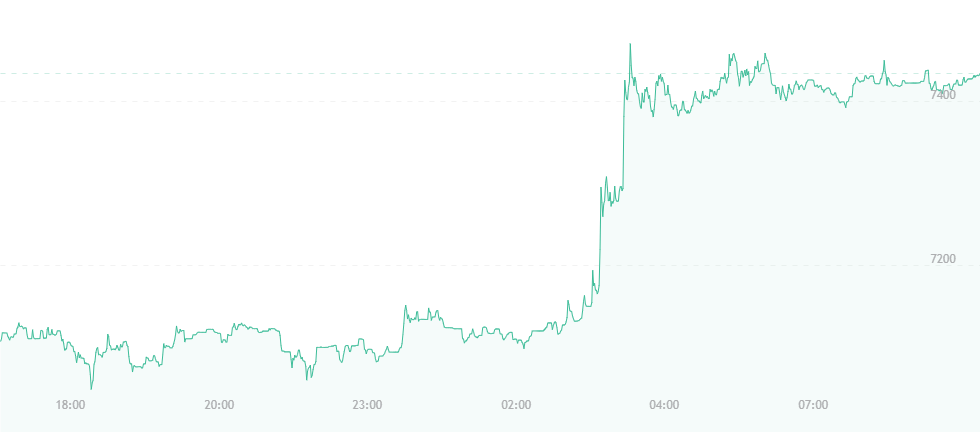Bitcoin has surprised us all and jumped by approximately five percent in less than an hour. The cryptocurrency was trading for roughly $7,100 during the early morning of May 29, only to incur a spike that saw its price rise by over $300. This is good news, in the short-term…
And yet, it appears the bulls are not making a valid and full appearance as of late. Bitcoin is roughly ten percent away from a solid buying mark should the bear sentiment remain as it is, though some analysts believe stronger (and renewed) sentiment will appear if bitcoin drops back into the $6,000 range. Currently, resistance is not being witnessed in bitcoin’s charts until the $7,600 and then $8,000 respectively.

Some believe bitcoin runs the risk of falling to $6,900 before the bears exhaust themselves and recovery becomes imminent. Technical charts showed a doji candle forming on Sunday, thereby signaling a short-term decrease in bear activity. The sudden jump to $7,400 suggests that a corrective rally remains elusive, and the bulls will need to defend the $6,900 key support level with all their might. Otherwise, bitcoin runs the risk of falling to as low as $5,000 in the coming weeks.
Forbes analyst Bill Bambrough explains that another bitcoin hard fork is coming in two years on May 27, 2020. The coin reward for mining and extracting new bitcoin blocks will drop from about 12.5 bitcoin to 6.25 bitcoin, and people are seriously worried about how this could affect the currency’s price.
“Previous halves have shown negligible impact on bitcoin’s price,” says Glen Goodman, bitcoin analyst and author of the upcoming book The Crypto Trader. “This is because – rather like an anticipated interest rate cut – everybody already knows it’s going to happen way in advance.”
As the market knows the halving is coming, a reduction in bitcoin’s price could happen at a gradual pace, which means the currency is likely to avoid sharp declines and spikes in the future.
“Historically, the cut has had very little immediate impact, although the price usually rose after,” says Chris Wilmer, professor at the University of Pittsburgh and co-author of Bitcoin for the Befuddled. “The rise in price makes sense in so far, as large buyers of bitcoins must either buy on the market or get them through mining, and after a halving event, it forces more people to buy on the market.”
Thorsten Koeppl – professor of economics at Queen’s University in Canada – added to this sentiment, explaining:
“It appears to us that any cryptocurrency should economically do the opposite of what bitcoin is doing. The value of bitcoin is partly driven by its potential as a payments tool and, before the fees rose along with the price, there were people using bitcoin for international transfers. This has become more expensive to do now, but the price is still being supported.”
Ultimately, the first individuals to be affected by the halving will be bitcoin miners, and once all 21 million of the coins are extracted and accounted for, these miners will largely rely on transaction fees as their primary form(s) of income.

